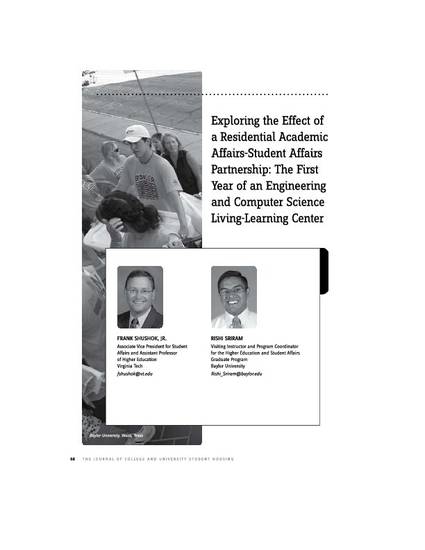
This study explores whether living-learning communities for engineering and computer science students afford opportunities to engage faculty and peers differently than they do engineering and computer science students not participating in the living-learning community at the same institution. The results of this study reinforce the growing body of research indicating that residence hall programs, facilities, and organizations can be rearranged to offer experiences and interactions that have been found to enhance student learning and success. Since faculty-student interaction and peer academic interaction have been found to be especially important to student persistence, efforts such as this living-learning program may have substantial long-term benefits. This study helps to provide further justification for the allocation of institutional resources for living-learning programs, especially those that benefit science, technology, engineering, and math (STEM) students.
Available at: http://works.bepress.com/rishi_sriram/2/
